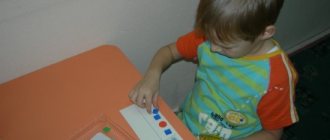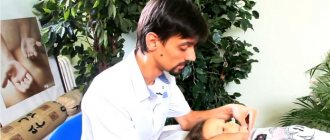Dyslexia is a partial impairment of reading and writing skills. It causes many problems already from school, where dyslexics are often equated with mentally retarded children for their poor academic performance. In adult life, a violation that is not regulated in a timely manner also complicates life.
However, not everyone considers dyslexia a disability. For example, Ronald Davis in his book calls it a “gift.” To correct the peculiarity, he offers his absolutely unique method.
The essence of D. Davis's method
Ronald Davis, author of The Gift of Dyslexia and The Gift of Learning, has suffered from dyslexia since childhood and knows firsthand the difficulties that children with this diagnosis face. Poor performance at school, constant problems communicating with peers, their bullying and ridicule, dissatisfaction and disappointment from teachers and parents - all this awaits someone born dyslexic.
Davis proved that dyslexia is not a defect, but a set of innate abilities that you need to learn to manage. Hardly anyone considers these talented people stupid and underdeveloped: Winston Churchill, G.H. Andersen, Leonardo da Vinci, Nelson Rockefeller, Keanu Reeves, Agatha Christie, Steve Jobs, A. Einstein. But these are examples of individuals with dyslexic disorders.
Therefore, if asked how to cure dyslexia, Davis would answer something like this: “Dyslexia is a great gift. It doesn’t need to be treated, it just needs to be corrected so that this feature only brings benefits.”
By observing himself and other gifted people, Davis was able to identify the internal source of all the problems of dyslexics - disorientation. It is this that gives them the opportunity to see objects in volume, to easily study mechanisms that are incomprehensible to most people, and to think figuratively. But at the same time, it interferes with free reading and handwriting: people with dyslexia find it difficult to perceive flat information, recognize, and reproduce symbols and words from ordinary book pages.
The basis of Ronald Davis's technique is to turn off disorientation and move the “epicenter of perceptions” (mental eye) of a dyslexic to the optimal “point of orientation.” After gaining the ability to control their consciousness, children with dyslexia learn to read using 3D models of symbols, words and plots that they understand.
The Davis method, as applied to each student, involves going through the following stages:
- Preparatory - includes goal setting, the formation of motivation and responsibility, the concept of an “energy scale”.
- Adjustment of consciousness. Consists of sections: assessment of perception ability, switching, discharge, fine tuning, coordination tuning.
- Mastering symbols and reading techniques.
Treatment and correction of ADHD and dyslexia, as well as dysgraphia at the Medis clinic
Inattention, impulsiveness, hyperactivity - these are the manifestations of this type of disorder that are observed in children. There is a high probability that such a disorder will be inherent in a person in the process of growing up; in 30-70% of cases this is exactly what happens if in childhood this problem is not addressed to a specialist and treatment is not carried out in a timely manner. Speaking about ways to eliminate attention deficit hyperactivity disorder, it is worth noting that each specialist dealing with this problem selects his own method and selects the appropriate tools, performing ADHD treatment individually for each patient. This is justified by the fact that there is no method that is equally effective for all people, and in order to effectively treat ADHD, it is necessary to take into account a number of individual factors. In their practice of eliminating attention deficit disorder, the clinic’s specialists use:
- The Gift of Dyslexia is the technique of the great American dyslexia specialist, which allows the child and adult to focus, study and work successfully;
- a drug method that can be used as an additional correction of ADHD;
- behavioral therapy, which helps a person develop skills for correct behavior in society.
The extensive experience of doctors and medical methodologists, their professionalism, knowledge of various methods for diagnosing and treating neurological-behavioral disorders, allows us to guarantee clients of the clinic successful relief from problems such as attention deficit hyperactivity disorder, as well as dyslexia and dysgraphia. At the same time, Ritalin and other psychotropic drugs are strictly not used, which are so popular in the “West”, but lead to additional problems.
Preparatory stage: where to start learning according to the D. Davis method
Preparation for training is as important as the learning process itself. Without the necessary attitude and preliminary assessment of the situation, it is very difficult to solve the problem, even using the most successful technique.
Purpose, motivation and responsibility of the student
To successfully correct dyslexia using the D. Davis method, it is necessary that the child:
- knew about the existence of a problem and a way to solve it;
- wanted to eliminate her;
- was ready to take responsibility for changing the situation.
A dyslexic person must understand why correctional work is being carried out. The existence of a problem cannot be hidden from him. The student needs to be explained that his problem is solvable—there is a real opportunity to correct the violation. In other words, he must set a goal for himself. It is important to remember it in difficult moments, when laziness appears or when you do not want to move on.
In addition to the goal, there must be a strong desire to eliminate shortcomings. The child wants to solve the problem, wants to change, wants to learn and live like everyone else - this is the driving factor of progress in this matter.
After desire, responsibility becomes a mandatory factor - the readiness of the dyslexic to manage the process and be the main character in it, on which the success of learning depends.
The role of the teacher here is rather secondary, but still important. It is the mentor who must make sure that there are 3 motor components of the learning process. To do this, you need to have a conversation with the student:
- Find out what worries the child, what he sees as a problem. The student cannot be indifferent to what is happening. It is important that he speaks frankly and expresses all negative emotions.
- Ask if he would like to change the situation. Ask them to imagine what it would be like without this problem. The student himself must understand that he no longer wants to endure the symptoms of dyslexia.
- Offer your help and support, subject to his willingness to spend time and energy on learning.
Energy scale
It is important for children with dyslexia to learn to control their energy levels and bring them back to normal. An energy scale is an imaginary energy measuring device. It will allow a child with dyslexia to measure their activity level and adjust it according to the situation, as well as compare their own and others' energy levels. It is better to use a 10-point scale.
To show your child what the energy scale is for and teach how to use it, you need to discuss this topic with him:
- Find out if the student understands what a scale is. If not, then explain. Any scale is used to determine or regulate any indicator.
- Ask to imagine a scale that determines the level of energy and internal time. Ask your child questions, the answers to which will confirm the existence of a scale in his head: “What color and size is it?”, “How many divisions does it have?”
- The child should move the imaginary scale slightly to the side and place his hand next to it.
- Ask about his energy level at the moment.
- Ask to lower or increase the level, find out what sensations arise. If the indicator decreases, then the state will be calmer and more peaceful. If the indicator increases, the child will feel cheerfulness, an influx of strength and energy.
- Ask what the indicator of this scale is in various situations: when he sits in class, plays sports, plays, listens to music.
- While walking down the street, you can ask your student about the expected energy level of other people. Explain that it is easier to communicate with a person if you are on the same energy level with him.
After discussing the topic, it is necessary to tell the student that the scale is always near him. With its help, he can determine his energy level at any time and adjust it according to the environment.
The role of the mentor
Throughout the entire training using the Davis method, the mentor helps the dyslexic person, gives tasks, checks their completion, and monitors the child’s condition. It is necessary for the student to feel supported by him. Compliance with the following basic points is considered mandatory:
- absence of pressure, violence, punishment;
- patience and tolerance towards the student. All the child’s mistakes and failures are, first of all, the teacher’s mistakes and failures;
- praise for any successes, even small ones;
- establishing trusting friendships, constant communication, discussing successes, obstacles and searching for new solutions;
- availability of time for rest and play;
Important! If patience and nerves are lacking at some point, you should not take it out on the student. It's better to stop exercising for a while. Sometimes a mentor also needs rest and relaxation.
Correction of dyslexia at the Medis family clinic
The clinic, which practices modern methods of treatment and prevention of various diseases, has specialists who can solve the problem of impaired reading abilities of a child and the learning delay caused by it. To correct and treat dyslexia, the clinic uses various methods, in particular, Ronald’s method, which is 97% effective. Its essence is that with the help of an “orientation point” that allows you to see the world without distortion, the child is helped to master the “switch off” mechanism. In the future, it will be easier for the child to master printed symbols and words and get their figurative expression in his imagination.
In the clinic, this technique is successfully practiced by a specialist from Israel, whose experience is unique. Correction of dyslexia is carried out under their strict supervision. When conducting diagnostics and testing, doctors take into account many factors that could affect the child's condition. After all, dyslexia is a disorder that is quite difficult to diagnose - this requires good experience and training, mastery of certain techniques and skills. The clinic staff has everything necessary for this. Therefore, we know how to deal with a disorder such as dyslexia. After communicating with our doctors, a course of treatment and mastering the “switching off” method, children are transformed: they not only demonstrate success in learning, but also develop their creative abilities, look at the world in a new way and open up from a new side. Having overcome dyslexia, these children become more self-confident, and their parents no longer have to put up with teachers' comments about their retardation and slowness.
If you find on the Internet other specialists and centers in Moscow using this technique, then know that there are no other centers. We know this well. The matter will end with dubious activities in the apartment and, having spent less money, but also time, you will return to us. If you do not get the desired results from the Davis method, please do not assume that the method does not work. It works well for us, you can see for yourself.
Correction of consciousness according to Davis: the concept of the “mental eye” and its movement
The concept of the “mind's eye” arose from Ronald Davis when he observed his sensations in the process of creative impulses. He found that creative thinking changed the point of view of mental images, meaning he could view them from different angles. Dyslexia was getting worse at this point.
Thus, dyslexics are able to become disoriented - change the position of the “visual epicenter” (mental eye), from which they see the image of an object at the moment. It is the ability to see it in volume that makes dyslexia a gift and at the same time a problem. After all, the “mind's eye” begins to move in any state of confusion when the consciousness cannot recognize anything, including symbols or words.
In the case of any objects or phenomena, such figurative thinking helps and makes it possible to study them in more detail, and when studying two-dimensional flat symbols it confuses even more. Incomprehensible symbols and words begin to spin and spin, sometimes increasing and sometimes decreasing in size - but the dialexician’s consciousness still fails to recognize them.
To learn to read, a child with dyslexia needs to turn off disorientation. He must place the "mental eye" while reading in a place that will not allow the mind to become disoriented. This place is called the "orientation point." It is located 15-30 cm above and behind the head. How to learn to put your “mental eye” in the right place? And what will this opportunity provide in the future?
Assessment of Perceptual Ability
First, it is necessary to determine whether a person is able to freely move the "mind's eye" from one point to another, that is, whether he can consciously initiate the process of disorientation. Before conducting the test, you need to find out which hand the patient has dominant and which object is easy for him to imagine.
Procedure for assessing perceptual ability:
- The child is sitting on a chair. Closes his eyes and extends forward (palm up) the hand opposite to the dominant one: right-handed left, left-handed right. He imagines that he has some object on his hand (which he indicated at the beginning).
- The mentor asks questions about the object: “What color, size, shape is it?”
- Then he takes the index finger of the student’s dominant hand and raises it to a point slightly above the eyes, at some distance from the forehead. He asks to transfer the “mental eye” to the finger and taps on the finger. If the child does not see the object “from here”, the test is over for him - he is not able to control the orientation.
- If the previous stage is completed successfully, the mentor moves the student's finger to another place around the object. He asks if the patient sees the object “from there” and taps his finger. Asks to describe the object from this side. The finger is at the same distance from the object as the eyes.
- If necessary, he moves the finger further until he is absolutely sure of the client’s ability to control the “mental eye.”
Switching
To teach a dyslexic to read, the Davis method suggests turning off the disorientation that confuses him. To easily turn off disorientation, you need to teach the student to place the “mental eye” at the orientation point. How to do it:
- A child with his eyes closed imagines a line coming out of an object in the palm of his outstretched hand, passing through his nose (bridge of the nose) and coming out of his head 30 cm above and beyond the top of his head.
- Transfer the student's "mind's eye" to the student's finger (as in assessment). Then move your finger to the approximate location of the orientation point, that is, 15-30 cm above and behind the head, always on the line of symmetry.
- Ask the student to stretch and secure 2 anchor lines from the ears and one from the top of the head to the orientation point.
- The child removes his finger. At the same time, the teacher clarifies that the “mental eye” no longer moves with the finger, but remains on the line at the orientation point. The original line from the object and the object itself are erased from the imagination. Only three anchor lines remain, and at their intersection - at the orientation point - the “mental eye” should still be located.
- Ask the student to describe the anchor lines (color), ask how many dots the child sees, find out their color.
- Ask to record the view from this point. Explain that when the student sees this, he is in a state of orientation. If the view becomes different, the “mental eye” needs to be oriented - moved again to the point of intersection of the anchor lines.
- Practice reinstalling your mind's eye after it has become disoriented due to disorientation. To do this you need, for example, to read a book. If disorientation occurs, check the condition of the UG: if it has shifted, correct it, put it back. In this case, it is necessary to identify words that trigger disorientation. The exercise is carried out until the student can easily return the UG to its place.
Necessarily! Before conducting a lesson, it is important to tell the child what will be done with him, to show all the manipulations schematically.
It is important to explain to dyslexics that:
- No one sees the “mental eye” except the owner;
- it cannot be lost, touched, hit or torn off;
- only the owner himself can move it and move it in any direction;
- he jumps off due to the fault of the owner when he is in a state of confusion;
- when the “mental eye” shifts in the process of recognizing unknown symbols or words, it must be put back;
- for some time it will float around the orientation point (“drift”) - this is normal, it will pass over time;
- UG cannot be withheld - this may worsen the patient’s condition. It just needs to be periodically returned to its place if it is displaced.
Another way to show the student a place from where he must see everything to maintain orientation is to look through the eyes of a child standing behind him. This just turns out to be about 15-25cm from the top of the head.
Discharge
If there is excessive concentration, excessive effort, fatigue, or overexertion (due to trying to control the “mind's eye”), the dyslexic’s body requires a release. It is carried out as follows:
- The hand is slightly clenched into a fist.
- Think “open hand”, at this time squeeze your hand even tighter.
- Think "open hand" - clench your hand into a fist so tightly that you feel the muscles up to the elbow.
- Relax your hand. Listen to the body.
- Inhale, hold your breath for 2 seconds, and exhale loudly through your mouth.
- Take a deep breath so that the feeling of relaxation spreads throughout the body and ends up in the “mental eye”: it should relax, discharge. Then this sensation from him passes through the head to the neck.
Thanks to this release, all muscles return to normal, the feeling of tension, headaches, and stiffness go away.
Fine-Tuning the Mind's Eye
Fine tuning is carried out in order to find the optimal, absolutely comfortable orientation point. To configure it, you need:
- Standing on 1 leg, move your “mental eye” until you are completely balanced. After each movement, you need to wait and check your balance.
- When the ideal state of balance is found, stand again on 2 legs. Rearrange the orientation point to the location of the UG. Stretch the anchor lines, fixing the position of the “optimal orientation point”.
Achieving the “optimal orientation point” is accompanied by:
- feeling of comfort, well-being;
- perfect coordination.
Note! It is better to carry out the fine-tuning procedure no earlier than 2 days of orientation control classes. Also, it cannot be carried out if the drift of the “mental eye” is still ongoing.
Setting up coordination using the D. Davis method
To eliminate symptoms of dyslexia such as clumsiness and confusion between the concepts of “left” and “right,” Ronald Davis advises using the following coordination exercises:
- Standing on 1 leg, alternately catch the balls with your left and right hands.
- In the same position, catch 2 balls at the same time.
- The teacher throws 2 balls slightly away from the student: first at one, then at the other. The child catches them.
The task in each exercise is to catch the balls and maintain balance.
Do not forget! Before completing the task, you need to check the orientation point.
The mentor throws the balls from a distance of 2-3 meters, for small children it decreases. It is better to take soft balls that will not bounce.
Mastering symbols
The next stage of the program is mastering symbols and reading techniques. Dyslexics easily learn with the help of three-dimensional images, therefore, correction of dyslexia according to the D. Davis method involves the use of plasticine models of symbols, words and plots.
Note! Before learning each element, remind your child of the orientation point and ask him to collect his thoughts.
To master the symbols, you need to prepare certain materials:
- 0.5-1 kg of white plasticine;
- printed and capital alphabets;
- black boards for modeling. It's better to draw lines on them;
- dictionary, textbooks, primers;
- notebook, paper, pencil;
- scissors, extruder, stack, plasticine molds;
- wet and dry wipes.
Mastering letters
To learn letters, the student performs the following actions:
- Sculpts each letter (small, large) from plasticine, height about 6cm.
- He traces the molded symbol with his finger and matches it with the printed one.
- Pronounces the letter and the sound it represents.
- Make up a word starting with this letter.
- Prescribes the learned symbol from memory.
It is important! If, while learning a letter, a child begins to get nervous, refuses to study, or becomes disoriented, it is worth paying special attention to it. It is necessary to find out the reason for this behavior and work through the symbol especially carefully until such symptoms disappear.
Letters that are difficult to remember or cause signs of confusion also need to be worked out in more detail.
The lifespan of letter models is until the student completely memorizes the alphabet from “A” to “Z” and vice versa. They should be visible between classes.
Punctuation marks
Mastering punctuation marks follows a similar pattern:
- Each sign is molded from plasticine.
- The student traces the sign with his finger and compares it with the printed sample.
- Says its name and meaning in speech (what it is needed for).
- Prescribes the studied sign.
The lifespan of the sign model is until the next lesson. Before breaking the model, ask the student about the meaning of the sign. Between classes, three-dimensional models should be in the student’s field of view.
Mastering numbers
While studying numbers, the child performs the following actions:
- Sculpts numbers from 1 to 9 measuring 5-6 cm.
- Place a corresponding number of plasticine balls next to each model.
- Sculpts its name under the number.
- He circles the number, its name and the balls with his finger.
- Counts balls. Correlates the molded number with the printed sample and the number of balls.
- Points to a plasticine figure, names it, says the value (indicates quantity).
- Points to the name of the figure, names the word, says the meaning (indicates a figure, number or quantity).
- Writes down a number and a word from memory.
The lifespan of digital models is until they are fully mastered. Between classes, the plasticine numbers remain visible.
Reading training
If a dyslexic person knows the alphabet well, but makes mistakes when reading: he pronounces words backwards, swallows their endings, misses letters in them, he needs to clarify the meaning of erroneous (missed) words and practice his reading technique.
Mastering words
Most words evoke specific associations for any person. For example, dog, nose, green. It is not difficult for a person, including a dyslexic person, to imagine what a table, a spoon, or a horse are. But auxiliary words, such as prepositions, conjunctions, interjections, are very difficult to imagine. It is with them that people with dyslexia have the most problems, because they most often provoke disorientation. Davis advises writing out and parsing these words as follows:
- Ask if the child knows what this word means. Ask if it causes any discomfort. If yes, find out why.
- To explain the meaning of the word, you can look it up in the dictionary.
- Ask the student to form a word and a plot for it, and run a finger over the plasticine figures.
- Cover the model with a sheet. The student says the word and its meaning, then writes down the learned information in a notebook.
In a similar way, you need to work through all incomprehensible or similar words. The plasticine model exists until the next lesson. Before breaking it, you need to make sure that the student has assimilated the information received.
Note! If, after carrying out the “Mastering of Symbols” technique, mistakes are still made in the word, you need to extend the life of the model or create another plot.
Step by step reading
Learning to read according to the D. Davis method takes place in 3 stages:
- Spell reading.
- Run your eyes - run your eyes - spell it.
- Punctuation in images.
Remember! When mastering reading techniques, it is important not to miss signs of disorientation: skipping, replacing letters, speeding up or slowing down the pace, rubbing the neck, fidgeting, bending the head too much over the page. When they are detected, you must stop and ask the student to check the orientation point. You can also take a break.
Spell Reading
The main tasks of the first stage:
- learn to read from left to right, moving along the page from top to bottom;
- learn to define words as a collection of letters.
Rules for the “Spell” stage:
- Comprehension of the information read is not important - what is important is to be able to reproduce the printed information.
- You need to read slowly, without tension, without mistakes.
- The lesson lasts no more than 10 minutes, then you should take a break of the same length.
On a note! You can simplify the reading process for the student by covering the text to the right of the word being read with one blank sheet, and covering the lines below with another. Another option is to increase the spaces in the text.
Run your eyes - run your eyes - spell it
At the second stage it is important to learn:
- move your gaze correctly - from left to right;
- recognize words, read them in their entirety.
Understanding the text is encouraged, but not required.
The task is performed like this:
- The student runs his eyes over the word and tries to read it.
- If you can’t pronounce a word the first time, you need to run your eyes over it again and try to read it.
- If it is impossible to pronounce the whole word again, the student reads it spell by letter.
Punctuation in images
The stage “Punctuation in images” is the final one. Its goal is to achieve a complete understanding of the material read.
It is important to understand the meaning of all words and punctuation used. Before each punctuation mark, the child stops and explains the meaning of what he read. If some words are not clear, their meaning needs to be analyzed using the “Mastering of Symbols” method.
The Ronald Davis Method is an effective way to combat the negative aspects of dyslexia. But to achieve good results and bring the child’s skills to the level of his peers, it is necessary to show patience and hard work.
For classes to be more beneficial, you need to do them daily. Remember to remind your child to move the mind's eye to the orientation point. During the learning period, it is important to rejoice at every progress forward, as well as praise the child for his efforts and successes.
Related posts:
- What is "War and Peace" about? Summary of the novel “War and Peace” by chapters. All answers...
- I.S. Turgenev “Mumu” “Mumu” I.S. Turgenev: read the story ONLINE without registration. The work in its entirety...
- Experimental study of the development of coherent speech in preschool children with ODD. Diagnosis of coherent speech in children is carried out using accessible...
- P.P. Ershov “The Little Humpbacked Horse” - summary of “The Little Humpbacked Horse” by P.P. Ershov - a very brief summary for the reader...
Dysgraphia
In addition to problems with reading, some children may have difficulty mastering writing. If the term dyslexia is used to describe reading difficulties and general learning problems, then dysgraphia is considered as one of the facets of this problem. This term is used to describe a person's difficulty or inability to master writing skills. As a rule, with dysgraphia, writing disorders such as:
- uneven, “jumping” handwriting, words can be written without slanting, the letters that make up words can be of different sizes;
- Words may either be omitted or have extra letters added, which is due to a person’s inability to reproduce heard words phonetically.
Correction and treatment of dysgraphia is one of the clinic’s activities. Specialists in this field, who have extensive experience working in Israeli clinics, provide consultations, diagnosis and elimination of this problem at a family medical center in Moscow.









